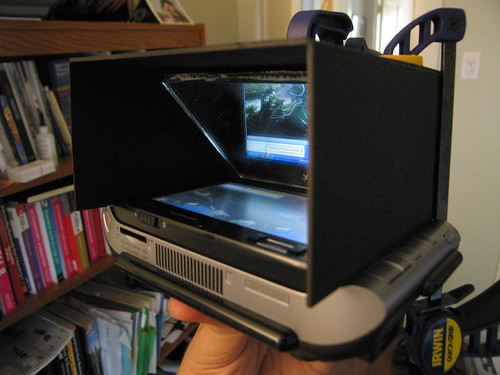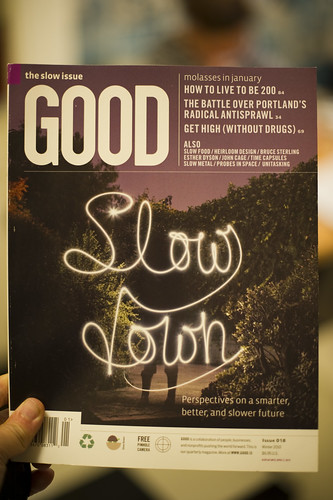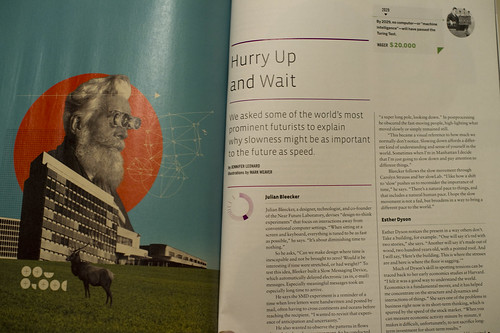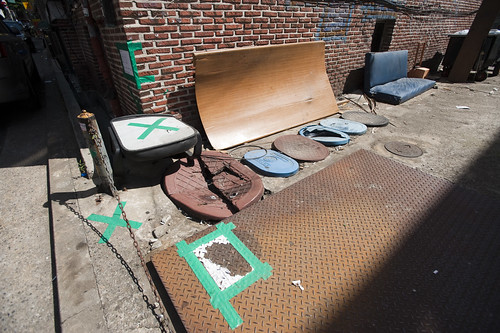It’s not often we’re found in print, but this happened when the magazine Good did its “Slow Issue”. Jennifer Leonard chatted with us one morning about our perspectives on the slow movement because of our work on the Slow Messenger device and on-going collaborations with slowLab and Carolyn Strauss. There’s mention of the device and a brief interview with folks like Bruce Sterling, Esther Dyson and Jamais Cascio in the magazine and online.
Continue reading Slow Down
Tag: Press
The Week Ending 080110
Whilst technically still on holiday, there were some things done as usual and *holiday* is never entirely just not doing nuthin’.
There was a quick visit to the studio to begin to finish the second of two commissioned Trust devices, which is looking simultaneously quite insightful and lovely. I hope some day that this becomes a lever to torque the rudder if even ever so slightly.
Jennifer Leonard’s interviews in Good Magazine’s Slow Issue (*Perspectives on a smarter, better, and slower future*) with Esther Dyson, Jamais Cascio, Bruce Sterling, John Maeda, Alexander Rose and myself appeared online. The topic of the short discussions? “We asked some of the world’s most prominent futurists to explain why slowness might be as important to the future as speed.”
And, prompted by Rhys’ clever insights into a richer, smarter less ROI-driven vector into thinking about this whole, you know..augmented reality mishegoss, I’ve been reading a fascinating history of linear perspective that has been helping guide more meaningful thinking. (I have yet to see anything that leaps much further beyond flags showing where something is by holding up a device in front of my face, which just seems momentarily cool and ultimately not particularly consonant with all the hoopleheaded hoopla.
I’ve started The Renaissance Rediscovery of Linear Perspective, which has a number of curious insights right off the bat, particularly ones that remind us that linear perspective is only a possibility and not necessarily something to be thought of as “realistic” from a variety of perspectives. In fact, it merely makes renderings that remove experience and abstract points-of-view, something that I recently learned from Latour’s Visualisation and Cognition (which, not unsurprisingly, led me to this Edgerton book via a reference and footnote.)

And, the follow-on, which I haven’t started yet is the enticingly titled The Mirror, the Window, and the Telescope: How Renaissance Linear Perspective Changed Our Vision of the Universe, which immediately caught my eye as I am drawn more to the history, imagery, rituals and *user experience* dimensions of telescopes and binoculars as affordances for, bleech..*augmented reality* than this stupid hold-a-screen-up-to-my-face crap. ((cf. this stuff below — the screen-up-to-my-face configuration — never felt as good as the second iteration of this *Viewmaster of the Future* experiments we did a few years ago.))



